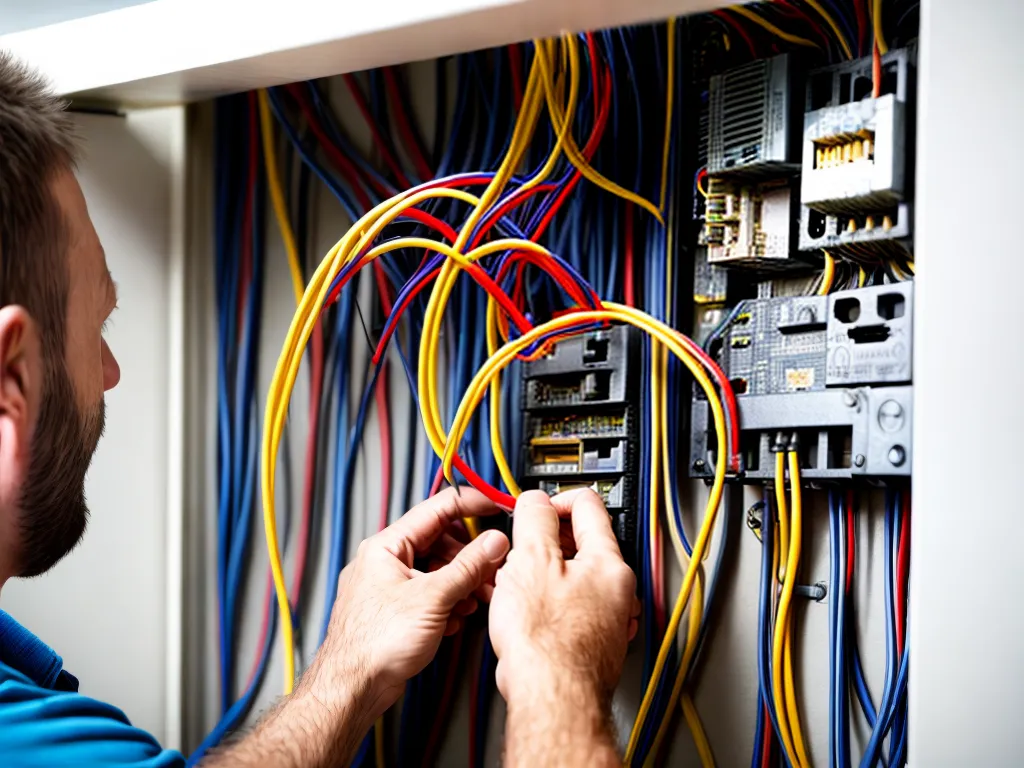
How to Safely Replace the Wiring in Your Home
Replacing the wiring in your home can seem like a daunting task, but with proper planning and by following safety precautions, it can be done safely. Here is a step-by-step guide on how to safely replace the wiring in your home:
Know When It's Time to Replace Wiring
Old or damaged wiring can present serious safety hazards like electrical fires or shocks. Here are some signs it's time to replace the wiring in your home:
- Frequent tripped circuit breakers or blown fuses from overloads
- Flickering lights that indicate loose connections
- Discolored or cracked wire insulation exposing copper
- Scorch marks or burning smells from wires overheating
- Old wiring that is cloth-insulated or deteriorated rubber
- Obsolete fuse boxes that need upgrading to circuit breakers
If you notice any of these warning signs, it's best to have an electrician inspect the wiring and provide rewiring recommendations.
Choose the Right Wire Type
For most homes, copper wiring is still the standard choice. Options include:
- NM (nonmetallic) cable: Insulated copper wires bundled in a plastic sheath. Common in finished walls.
- UF (underground feeder) cable: Insulated wires approved for direct burial. Used for outdoor wiring.
- THHN/THWN wire: Single insulated wires installed in conduit. Used for service entrances, subpanels.
The proper wire gauge (thickness) is key - too small can risk overheating, too large wastes money. Follow the National Electrical Code minimum guidelines for your circuit needs.
Create a Rewiring Plan
Careful planning of the wiring layout minimizes costs and disruptions:
- Map all existing wiring runs and label circuit breakers
- Decide where to place new receptacles, switches, lighting
- Group circuits efficiently, allowing room for future expansion
- Select locations for installing new junction boxes
- Determine if you need new subpanels or upgrades like AFCIs
Having an electrical permit and following code requirements in your area is essential.
Safety First! Turn Off Power and Install GFCIs
Follow these steps before starting:
- Turn OFF power at the main breaker panel
- Disconnect all wired appliances like AC units
- Use a non-contact voltage tester to confirm power is off
- Post safety signs so power stays off during work
- Install GFCI outlets for protection against shocks
Working with live wires is extremely dangerous and can cause electrocution. De-energize all circuits before wiring work begins.
Replace Wires Step-by-Step
With power off, follow these best practices:
- Carefully remove existing wires
- Use wire strippers to properly strip new wire ends
- Secure wires with wire nuts or crimp connectors
- Label wires with markers for easy identification
- Use cable staples to attach wires to studs or joists
- Insert wires into electrical boxes leaving 6-8 inches of slack
- Anchor boxes securely and reconnect devices like switches
- Test GFCI outlets to ensure proper function after connecting
- Inspect work thoroughly before restoring power
Take your time and be meticulous - incorrect wiring can lead to serious and dangerous malfunctions later.
Call a Professional Electrician if Unsure
While DIY wiring replacement is possible, it's critical that all electrical work meets your local building codes and safety standards.
If the rewiring scope is large or existing conditions are very old or hazardous, it's advisable to hire a licensed electrician. Their expertise can:
- Ensure the new wiring configuration complies with codes
- Provide experienced troubleshooting if issues come up
- Verify safety with professional testing before re-energizing
- Obtain required permits and arrange inspections
Don't take risks with old wiring yourself. Hiring a pro electrician is worth it for the peace of mind and safety.
Maintain and Monitor the Wiring Over Time
Even after replacing old wiring, continue to watch for potential issues:
- Check for damaged wire insulation, loose connections
- Test AFCIs and GFCIs monthly by pressing the "Test" button
- Hire an electrician immediately if you see signs of a fault
- Consider infrared scans to identify "hot spots" before failure
- Have wiring re-inspected periodically as a preventive measure
Proactive maintenance and monitoring of wiring conditions in your home provides protection against electrical hazards. By staying vigilant over time, you can keep your home's wiring safe for your family.